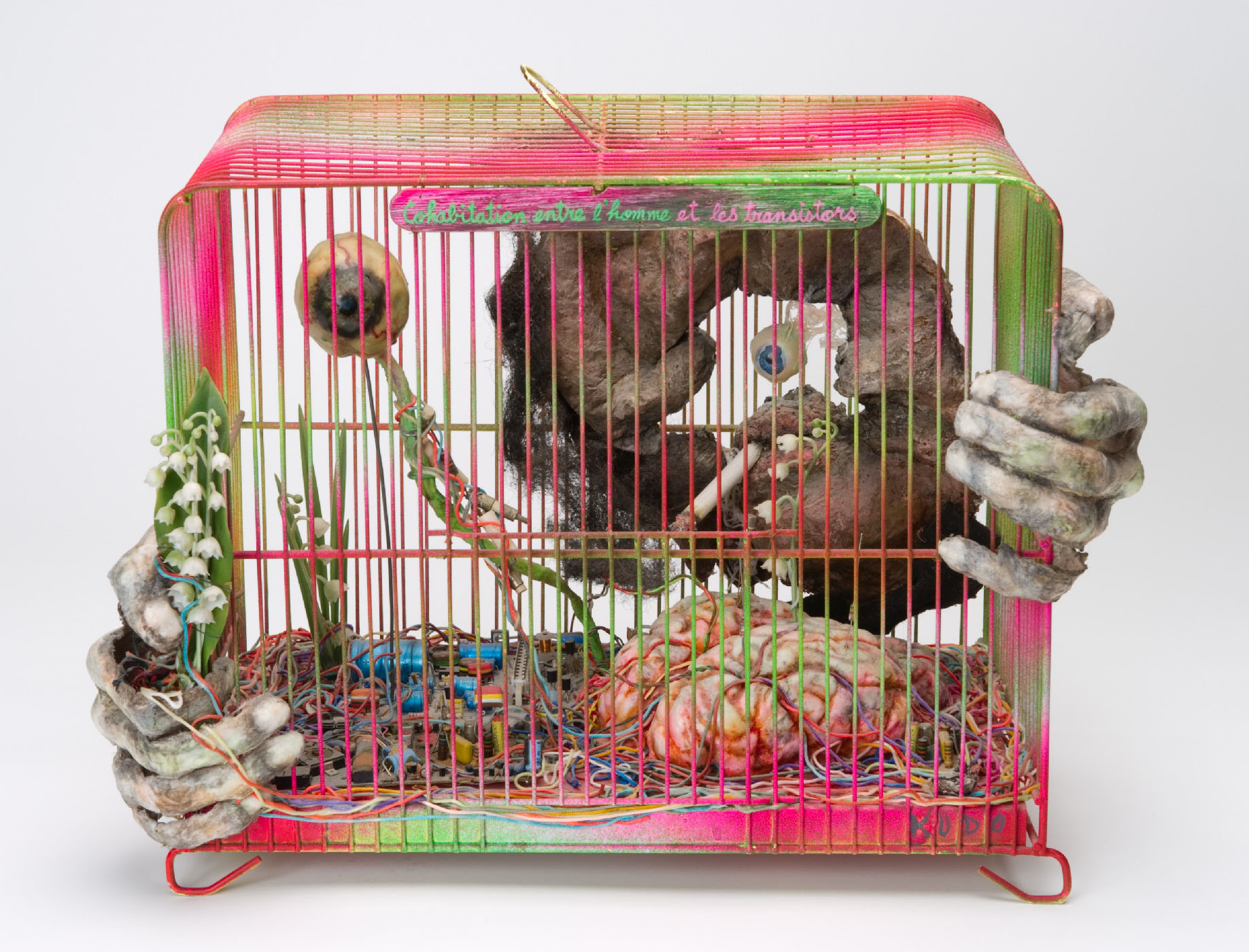Osaka-born Tetsumi Kudo's oeuvre has been the subject of a number of major international retrospectives since his death in 1990, and these indicate the artist's increasing postwar historical significance. The current National Museum of Art, Osaka retrospective is magisterial. With more than 600 pages, the bilingual catalog that accompanies it is now an essential art-history reference.
Like several artists of the Osaka-based Gutai Art Association, which was established in 1954, Kudo independently inaugurated a new concept later termed "happenings." These were a kind of performance, staged or improvised, that took place instead of conventionally exhibited artwork. He began these around 1958, when, as a boxer, he punched painting supports with gloves covered in paint. The first happening proper was American Allen Kaprow's "18 Happenings in 6 Parts" (1959). The earliest filmed happening of Kudo's was his artistic debut in Paris, in February, 1963. Grainy footage of "Philosophy of Impotence" shows the artist bound with rope, wrestling with a phallic caterpillar larvae that he appears to be engaging in fellatio.
That happening title was significant. For Kudo, mankind inherently lacked freedom and was a prisoner of society, politics, culture and other restraints. He scorned the establishment and the anthropocentrism of Western modernism, sought a reappraisal of society and set forth to destroy Western dualism — man versus nature, man versus machine. Only by rendering everything impotent could it be possible to save humans from the slavery of preserving the species. He did not, however, take his own advice, and so we might wonder what his family made of all this.


















With your current subscription plan you can comment on stories. However, before writing your first comment, please create a display name in the Profile section of your subscriber account page.